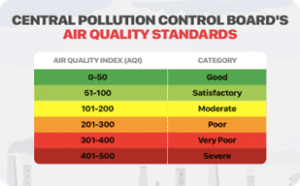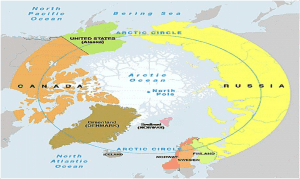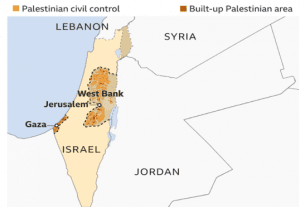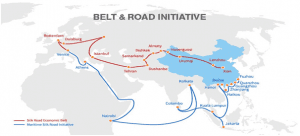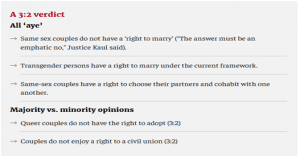LOST VOICE: ON INDIA’S ABSTENTION ON THE GAZA VOTE AT THE UN
THE CONTEXT: India has explained its decision to abstain at last week’s vote at the UN General Assembly (UNGA) for a ceasefire in the Israel-Palestine conflict as its way of protesting the omission of any “explicit condemnation” of the heinous October 7 terror attack by Hamas militants on Israel.
MORE ON THE NEWS:
- India abstained on a resolution adopted by the UN General Assembly calling for a humanitarian truce, choosing not to back the international community’s demand that there be an immediate halt to the violence.
- Israel has launched a massive counter-offensive against Hamas after unprecedented attacks by the militant group on October 7 killed more than 1,400 people.
- 193 members of the UN General Assembly (UNGA), which met in a resumed 10th Emergency Special Session, voted on the draft resolution submitted by Jordan and co-sponsored by more than 40 nations including Bangladesh, Maldives, Pakistan, Russia and South Africa.
- The resolution garnered 120 affirmative votes, while only 14 countries, including Israel, the United States, Hungary and five Pacific island states, voted against. India was among the 45 countries that chose to abstain in the vote at an emergency session of the UNGA in New York.
ABOUT UNGA:
It was established in 1945 under the Charter of the United Nations. It Comprised of all 193 Members of the United Nations. The United Nations General Assembly (UNGA) is the main deliberative, policymaking and representative organ of the UN.
The functions and powers of the UNGA:
- Elect the non-permanent members of the Security Council and the members of other United Nations councils and organs and, on the recommendation of the Security Council, appoint the Secretary-General.
- Consider and make recommendations on the general principles of cooperation for maintaining international peace and security, including disarmament.
- Discuss any question relating to international peace and security and, except where a dispute or situation is currently being discussed by the Security Council, make recommendations on it.
- Initiate studies and make recommendations to promote international political cooperation, codification of international law, the realization of human rights and fundamental freedoms, etc.
- Make recommendations for the peaceful settlement of any situation that might impair friendly relations among countries.
- Consider reports from the Security Council and other United Nations organs.
INDIA’S STAND:
- India said that the resolution did not mention Hamas and that the UN needs to send a clear message against terror.
- India is concerned about the security situation and called for all parties to exercise
- India referred to the need for an “early solution” to the humanitarian and security situation.
- India has always supported a negotiated Two-State solution to the Israel-Palestine issue leading to the establishment of a sovereign, independent and viable State of Palestine living within secure and recognized borders, side-by-side in peace with Israel.
HISTORY:
- Emergence of Hamas (1987): In 1987, amidst the First Intifada (Palestinian uprising). Hamas was founded by Sheikh Ahmed Yassin. This political and military organisation emerged as a counterforce to the secular Palestine Liberation Organisation (PLO), seeking to establish as Islamic state.
- Impact of Intifadas and peace Efforts: The two Palestinian uprisings, known as’ intifadas (1987-1993 and 2000-2005), profoundly influenced Israeli-Palestinian relations. The second intifada effectively ended the peace process initiated in the 1990, leading to the renewed era of conflict.
THE MAJOR POINTS OF CONFLICT:
- Two-state solution: An agreement that would create a state for the Palestinians in the West Bank and Gaza Strip alongside Israel. Israel has said that a Palestinian state must be demilitarized so as not to threaten its security.
- Settlements:Most countries deem Jewish settlements built on land Israel occupied in 1967 as illegal. Continued settlement expansion is among the most contentious issues between Israel, the Palestinians and international community.
- Jerusalem: Palestinians want East Jerusalem, which includes the walled Old City’s sites sacred to Muslims, Jews and Christians alike, to be the capital of their state. Israel says Jerusalem should remain its “indivisible and eternal” capital.
- Refugees: Today about 5.6 million Palestinian refugees – mainly descendants of those who fled in 1948 – live in Jordan, Lebanon, Syria, the Israeli-occupied West Bank and Gaza. About half of registered refugees remain stateless.
THE WAY FORWARD:
- The two-state solution calls for establishing an independent state for Palestinians alongside. that of Israel.
- The issue of equal rights for both Palestinians and Israelis can no longer be ignored. We need a new paradigm that emphasizes a rights-based approach, regardless of solution.
- India could have explored other options to register reservations regarding the UNGA resolution than abstention like France which used the “Explanation of Vote (EoV)” method.
THE CONCLUSION:
India’s abstention in the recent UN General Assembly vote reflects its balanced and nuanced approach to international conflicts. While it has drawn criticism from some quarters, it underscores India’s commitment to principles of diplomacy and its focus on a negotiated resolution to complex global issues.
PREVIOUS YEAR QUESTION:
Q) “India’s relations with Israel have, of late, acquired a depth and diversity, which cannot be rolled ” Discuss. (2018)
MAINS PRACTICE QUESTION:
Q) “The government lost an opportunity to make India’s voice heard in the growing geopolitical conflict”. Discuss in the context of India’s abstention from the recent UNGA resolution related to Israel -Palestine conflict.
